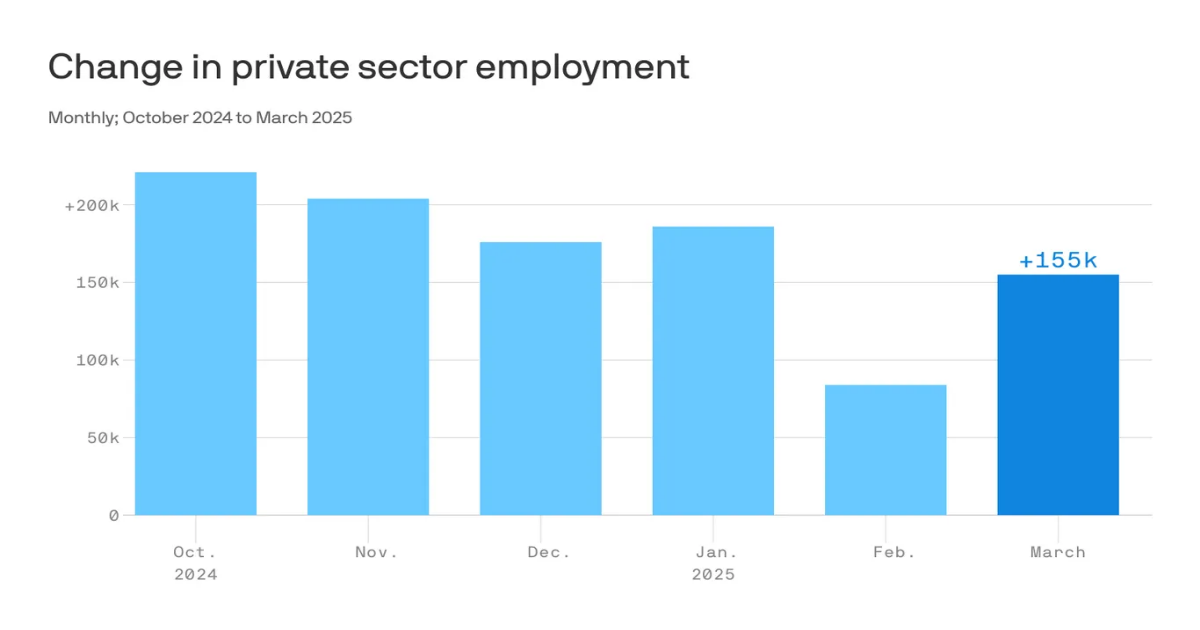

Data: ADP National Employment Report; Chart: Axios Visuals
Private sector hiring was solid in March, at least according to one early indicator that suggests, for now, falling business confidence isn’t translating into fewer jobs.
Why it matters: Wall Street economists are worried that the economy will buckle under the weight of President Trump’s tariffs. That is validated by the sentiment indicators in free fall, but less so in the economic data reflective of what businesses are actually doing.
- The first hard indicators of activity for March are out this week.
By the numbers: Private employers added 155,000 jobs in March, rebounding from the upwardly revised 84,000 gain the previous month, according to payroll processor ADP.
What they’re saying: “Despite policy uncertainty and downbeat consumers, the bottom line is this: The March topline number was a good one for the economy and employers of all sizes, if not necessarily all sectors,” ADP chief economist Nela Richardson said in a statement.
Between the lines: ADP’s employment report is not meant to be an indication of what the all-important government payrolls release might show on Friday.
- Still, ADP’s monthly report should not be totally shrugged off. The jobs data is based on actual payroll data of tens of millions of U.S. employees.
The big picture: The report aligns with what is apparent in low weekly unemployment filings: The labor market is still on solid footing.
- For the second straight month, manufacturing was the standout sector. It added 21,000 jobs last month, after adding 15,000 in February — what ADP called “stronger-than-average job gains.”
The other side: That might be welcome news for Trump. He’s vowed to revive the domestic manufacturing industry, which has reported dismal stagflationary conditions as tariffs take effect.
- The Institute for Supply Management purchasing managers’ index, a gauge of manufacturing activity, contracted in March after back-to-back months of expansion.
- The prices index surged on the back of tariffs, alongside a weaker employment index as manufacturers shed workers.
“The manufacturing economy is struggling, primarily due to the tariff uncertainty,” Tim Fiore, outgoing chair of the Institute for Supply Management’s purchasing managers’ index, told reporters Tuesday.
- “It’s very hard for me to determine what the demand situation was because it was so overwhelmingly focused on tariffs, which is today’s issue. Demand will be tomorrow’s issue,” Fiore said.
Zoom out: Trump-era trade policy moves faster than it takes to collect economic data.
- But respondents sent the Institute for Supply Management their updated information through the end of last month, reflecting a fresh snapshot of sentiment.
- ADP’s March employment report incorporates data across the entire month.
What’s next: Economists expect the government jobs report — out Friday at 8:30am ET — will show 140,000 jobs added last month, only a slight slowdown from the 151,000 payrolls added in February.
- The unemployment rate is expected to hold at a historically low 4.1%.
